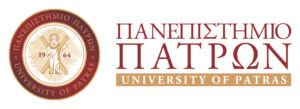Biology Didactics or Biology Education Research is a distinct area of educational research, which studies anything that has to do with teaching and learning Biology at all educational levels. More specifically, Biology Didactics is concerned with issues such as (a) understanding how biological knowledge is constructed from preschool to higher education; (b) designing and implementing appropriate learning environments to enhance students’ biological knowledge, thinking skills, understanding of the nature of Biological Sciences, sensitivity towards nature, and ability to act as responsible citizens; (c) evaluating these environments with analytical tools that capture both the learning process and the learning gains.
Selected publications
- Shtechman, Y., Ergazaki, M., & Haskel-Ittah, M. (2024). Mechanistic reasoning in biology among elementary school children: Epistemic criteria for evaluation and construction. Journal of the Learning Sciences, Open access, https://doi.org/10.1080/10508406.2024.2432682
- Ergazaki, M. (2022). The idea of ‘precursor models’ in biology learning environments for young children: the cases of genetic inheritance and natural selection. In Boilevin, JM., Delserieys, A., Ravanis, K. (Eds), Precursor models for teaching and learning science during early childhood (pp. 169-191). Contemporary Trends and Issues in Science Education, vol 55. Cham: Springer. https://doi.org/10.1007/978-3-031-08158-3_10
- Ampatzidis, G., & Ergazaki, M. (2021). How did Darwin prefer his tea? The socio-cultural embeddedness of science through a tea-time story. Science & Education, 1-20. https://doi.org/10.1007/s11191-021-00305-z
- Valanidou, E., Ergazaki, M., & Gasparatou, R. (2019). Towards a philosophy-inspired learning environment about biological classification: Insights from the 1st cycle of a design research. Educational Journal of the University of Patras UNESCO Chair, 5(3), 61-70. https://doi.org/10.26220/une.2952
- Ergazaki, M., & Zogza, V. (2013). How does the model of Inquiry-Based Science Education work in the kindergarten: The case of biology. Review of Science, Mathematics and ICT education, 7(2), 73-97. https://doi.org/10.26220/rev.2044
- Ergazaki, M., & Ampatzidis, G. (2012). Students’ Reasoning about the Future of Disturbed or Protected Ecosystems & the Idea of the “Balance of Nature”. Research in Science Education, 42(3), 511-53. https://doi.org/10.1007/s11165-011-9208-7
- Ergazaki, M., Saltapida K., & Zogza, V. (2010). From young children’s ideas about germs to ideas shaping a learning environment. Research in Science Education, 40(5), 699-715. https://doi.org/10.1007/s11165-009-9140-2
- Ergazaki, M., & Zogza V. (2005). From a causal question to stating & testing hypotheses: exploring the discursive activity of biology students. In K. Boersma, M. Goedhart, O. De Jong, H. Eijkelhof (Eds.), Research and the Quality of Science Education (pp. 407-417), Springer, Dordrecht, The Netherlands. https://doi.org/10.1007/1-4020-3673-6_32
- Ergazaki, M., Komis, V., & Zogza, V. (2005). High-school Students’ Reasoning while Constructing Plant Growth Models in a Computer-Supported Educational Environment. International Journal of Science Education, 27(8), 909-933.https://doi.org/10.1080/09500690500069376
